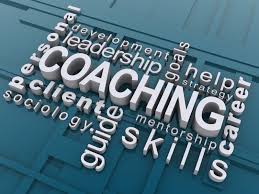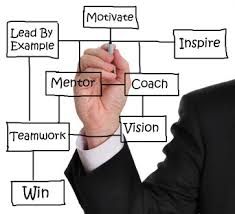Wikipedia defines coaching as a "development process via which an individual is supported  while achieving a specific personal or professional competence result or goal."
while achieving a specific personal or professional competence result or goal."
By definition, it would seem that any company or organization would embrace the concept of coaching, but not all companies see coaching as valuable.
A variety of studies have found that over 90% of organizations with 2,000 or more employees use coaching, in contrast with only 68% of organizations with 250-500 employees.
It appears that larger companies see the connection between coaching and the increase in their bottom lines while smaller businesses are more skeptical. Who's correct? Researchers would probably side with the large businesses on this issue.
An article by the Staff of the Executive Board of Bloomberg Businessweek had the following comments:
"While the link between effective sales coaching and better sales performance is widely known, the majority of sales organizations fail to realize the full potential of their investments in sales coaching and training. Often times, this means missed opportunities for dramatic improvements in top-line revenue growth, margin enhancement, conversion rates, as well as sales forecast accuracy, and sales rep retention and engagement levels."
If coaching has been proven to improve these types of important business metrics (especially sales rep retention and engagement levels), why do small and mid-size companies resist embracing the concept at a higher rate?
I believe it boils down to execution. The reality is that many organizations have great intentions regarding coaching but exercise poor or inconsistent follow-through.
Here are some of the most common coaching pitfalls organizations make according to the Bloomberg Board, followed by the contrasting suggested approach:
Generic Coaching Training Content
Effective coaching programs must link to the organization's sales model and address individual sales manager coaching challenges. Programs must be tailored to the sales manager, their team and the go-to-market strategy of the organization.
In a real estate company, this pitfall is usually demonstrated when managers try using off-the-shelf material or a "fly by the seat of your pants" approach to coaching.
Discontinuous Coaching Approach
Managers often see coaching as a sequence of separate events, similar to training, rather than an ongoing, continuous process where one coaching conversation is a continuation of the last. To solve this issue, embed a true coaching process within the normal workflow.
Lack of an Effective Coaching Infrastructure
Without the appropriate supporting "coaching infrastructure," it is near impossible to sustain long-term coaching benefits. The most progressive organizations actively measure coaching effectiveness on an ongoing basis and fully engage second-line and senior managers in the process to ensure that coaching remains an ongoing priority, not a passing fad.
Managers' Failure to Accurately Observe Behavior
Managers often revert to teaching sales tactics that worked well for them rather than focusing on the new skills required to effectively coach in today's environment. Critical to coaching today is the ability to correctly observe behavior and specify behavior change.
How many of you have counted coaching as one of the keystone pieces for retention and improved revenue? And if so, is your approach consistent and effective? Give it some thought!
In my next coaching article, we'll look at the history of coaching. Knowing the history will help you better understand the underpinnings and rationale as to why this topic is so relevant to growing and sustaining a successful business.
Join the WorkPuzzle Discussion at the Tidemark Online Community (TMOC)
Engage in the WorkPuzzle discussion by joining the TMOC private social network. Commenting on a public blog like WorkPuzzle can be a little intimidating, so why not join the discussion inside the privacy of the TMOC discussion group?
By joining TMOC, you'll get to see who else is in the group and your comments will only be seen by those whom you trust. Joining TMOC is quick, easy, and free (no kidding…this takes less than 2 minutes). To get started, click here.
Already of a member of TMOC? If so, join the WorkPuzzle Dialog Group by clicking on the WorkPuzzle Group icon on the left side of your TMOC homepage. Questions? Email the WorkPuzzle editor (workpuzzle@hiringcenter.net) and we'll walk through the process.
 Editor's Note: This article was written by Dr. David Mashburn. Dave is a Clinical and Consulting Psychologist, a Partner at Tidemark, Inc. and a regular contributor to WorkPuzzle.
Editor's Note: This article was written by Dr. David Mashburn. Dave is a Clinical and Consulting Psychologist, a Partner at Tidemark, Inc. and a regular contributor to WorkPuzzle.












